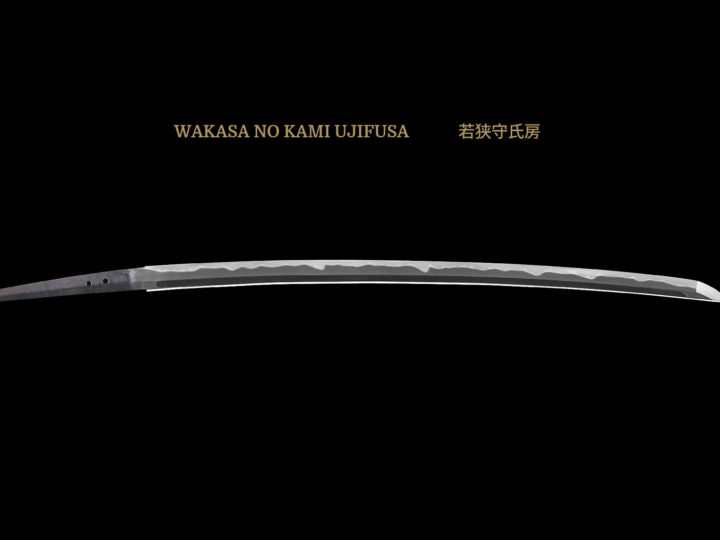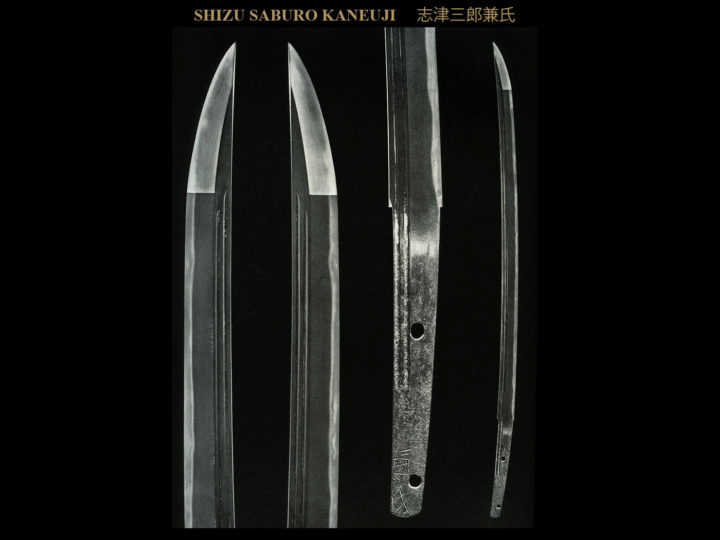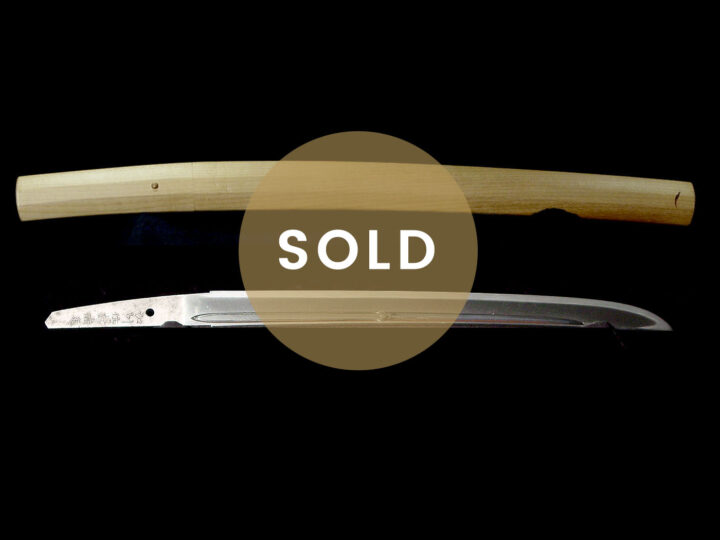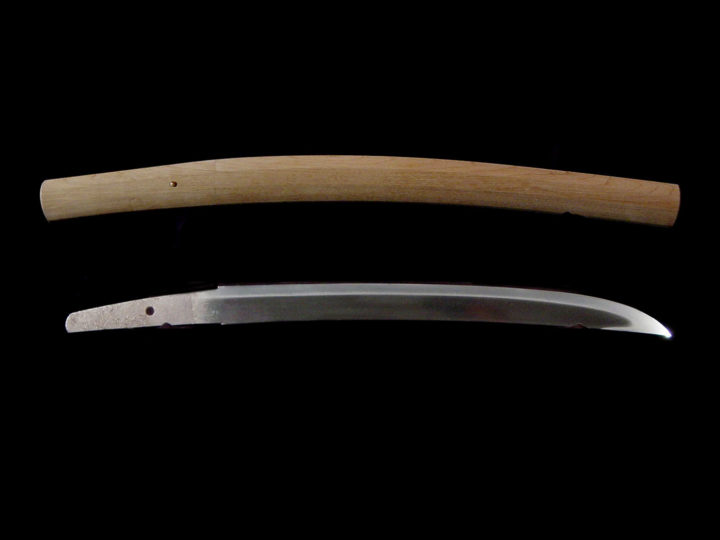
Magoroku Kanemoto (孫六兼元) worked in Akasaka in Mino Province around the beginning of the sixteenth century. He flourished during the Eishô (永正) era (1504-1521) and the Daiei (大永) era (1521-1528). He was the son of the first generation Kanemoto (兼元). He was also a contemporary and sworn brother of the second generation Izumi no Kami Kanesada (和泉守兼定) who was also known as Nosada. They say that being a sworn brother is a stronger tie than being a brother by blood. Together these two smiths are recognized as being two of the premiere Mino smiths during this era of sword making.
The name Kanemoto (兼元) was used by the generation before Magoroku Kanemoto (孫六兼元) and several successive generations following him. In fact the zokumei, Magoroku (孫六), was also used on occasion when referring to successive generations. Today it is thought that use of the Magoroku (孫六) name should only be applied to the works of the second generation.
There is also controversy as to the teacher of Magoroku Kanemoto (孫六兼元). Some texts say that he was the student of the first generation by that name and others say he, together with the second generation Kanesda (兼定), were the students of the shodai Kanesada (初代兼定). This is the prevailing theory despite the fact that the second generation Kanemoto (兼元) lived in Akasaka while the first generation lived in Seki that is some distance away. Also his tempering style of sanbon-sugi (three cedar tree) differs markedly from that of the shodai Kanesada (初代兼定).
If fact, the sanbon-sugi tempering style of the second generation Kanemoto
(兼元) (Magoroku (孫六)) differs what we commonly think of when we think of typical Mino sanbon-sugi tempering patterns for which this school is famous. The sanbon-sugi of the second generation consists of gunome having rounded heads in places making the hamon not totally uniform throughout the blade; while very sharply pointed heads that are juxtaposed in a regular pattern characterizes the works of later generations. Compared to calligraphy, the sanbon-sugi formation of the second generation is in the sôsho (grass writing) style while later generations were in the kaisho (block) style.
SUGATA: Katana, wakizashi, and tanto are frequently seen, but tachi are few. As for katana while there are some that have the style of the previous jidai, most are typical of the latter Muromachi era in that they are in the uchi-gatana style about two shaku in length with a slight saki-zori. The shinogi will be high and there will be little hiraniku. Tanto will generally be in the hira zukuri style with chukan zori (little or no curvature). The blades will be a wide with a kasane that is a little thin.
JITETSU: In shinogi-zukuri katana and wakizashi, masame hada will show up clearly in the shinogi-ji. The grain in the ji of his blades will trend toward straight itame and or mokume hada with traces of masame hada mixed in. Those works that are done with a gunome midare hamon will have hada more of an o-mokume style while those works done in hoso suguha will tend to show a more ko-mokume hada with masame hada near the mune. The overall effect of the jitetsu is that the grain will “stand out”. Also, there will be shirake utsuri in most blades and this is an important kantei point.
HAMON: When we think of the works of Kanemoto we think of the characteristic sanbon-sugi (three cedar trees) style of tempering. The sanbon-sugi of the second generation consists of gunome having rounded heads in places making the hamon not totally uniform throughout the blade; very sharply pointed heads that are juxtaposed in a regular pattern characterize the works of later generations. Compared to calligraphy, the sanbon-sugi formation of the second generation is in the sôsho (grass writing) style while later generations were in the kaisho (block) style.
BÔSHI: When the blade is tempered in midareba, the bôshi is midare-komi with a hint of jizô; when done in suguha, it is generally ko-maru. Occasionally, there is a blade in which the yaki haba (width of the temper) of the kaeri (turn back) is wider than the yaki haba towards the ha (edge).
HORIMONO: Very rarely did his blades have horimono.
NAKAGO: Generally, his nakago are short in keeping with the general shape of the latter Muromachi Era. His nakago jiri are usually iri-yamagata in shape. His yasurimei are takanoha (hawk’s feather).
MEI:
KANEMOTO 兼元 (Most common)
NÔSHÛ AKASAKA JÛ KANEMOTO 濃州赤坂住兼元 (Rare)






